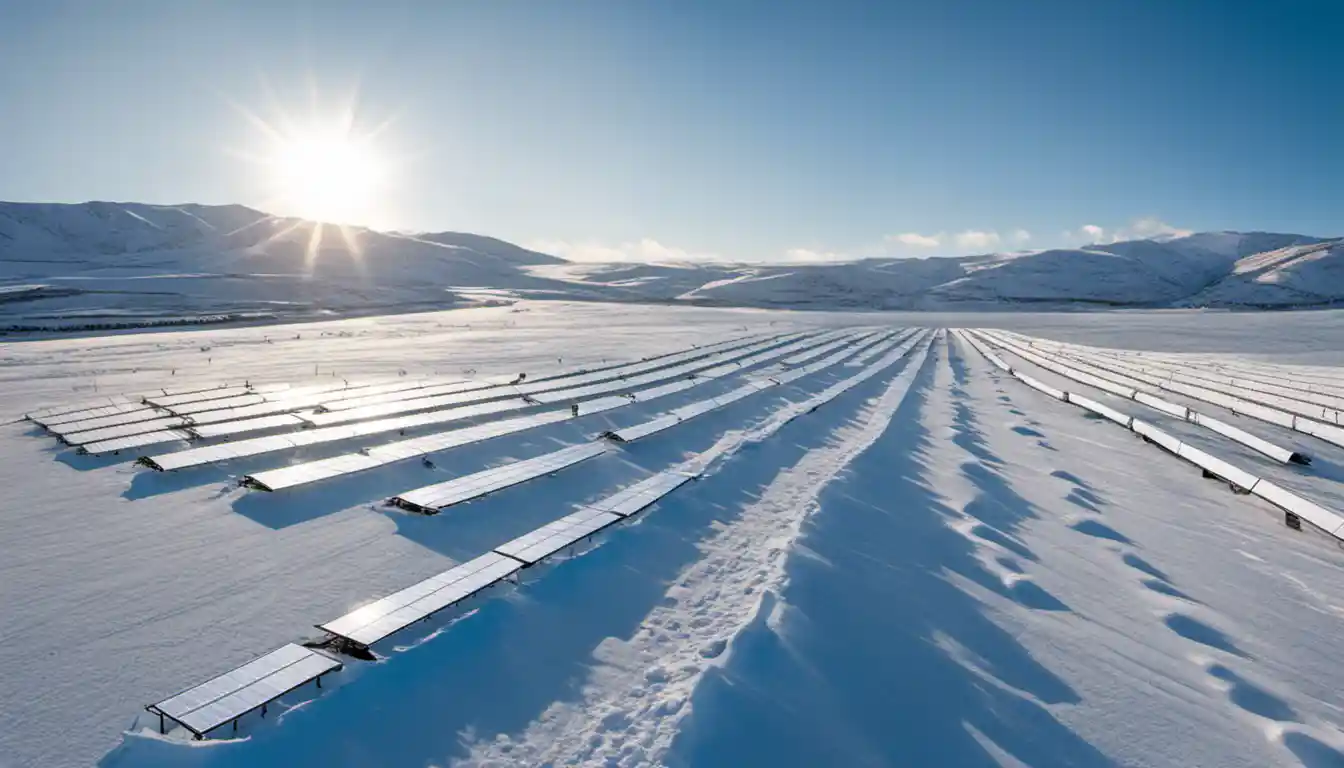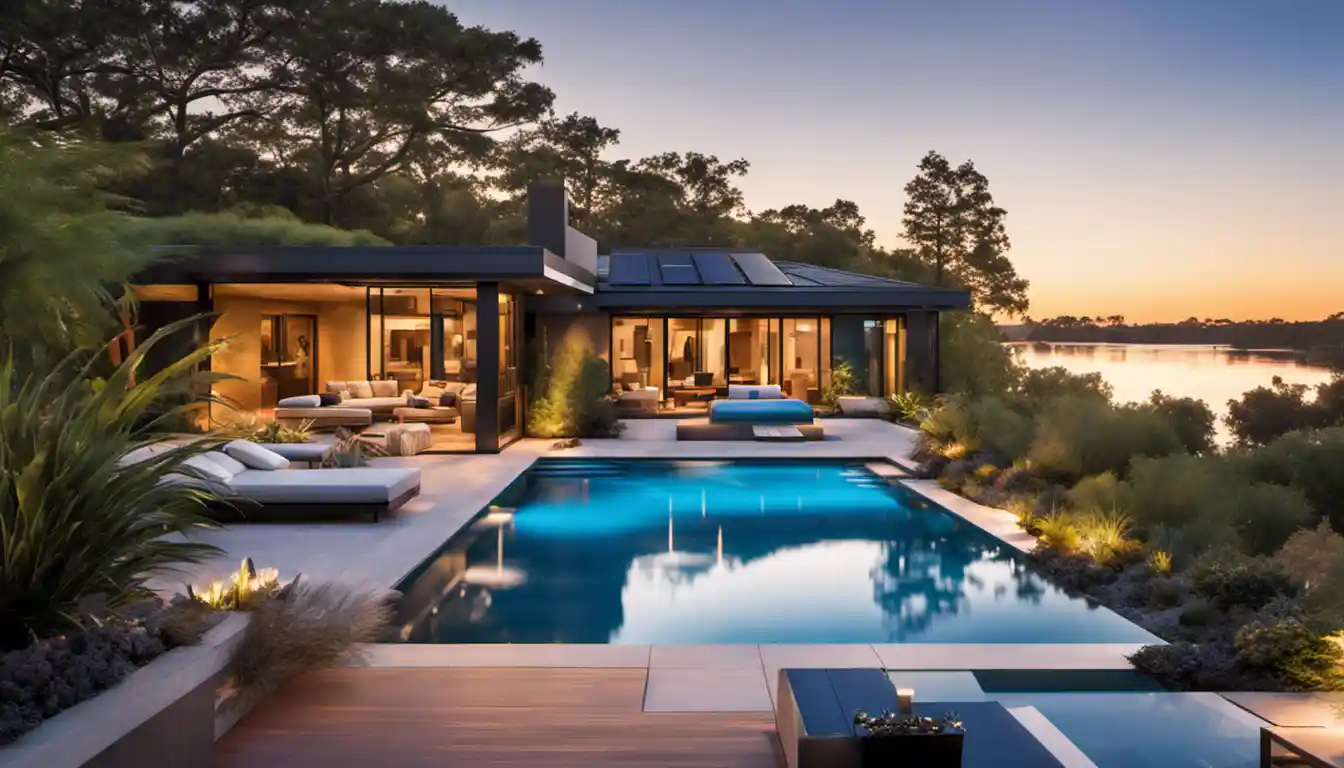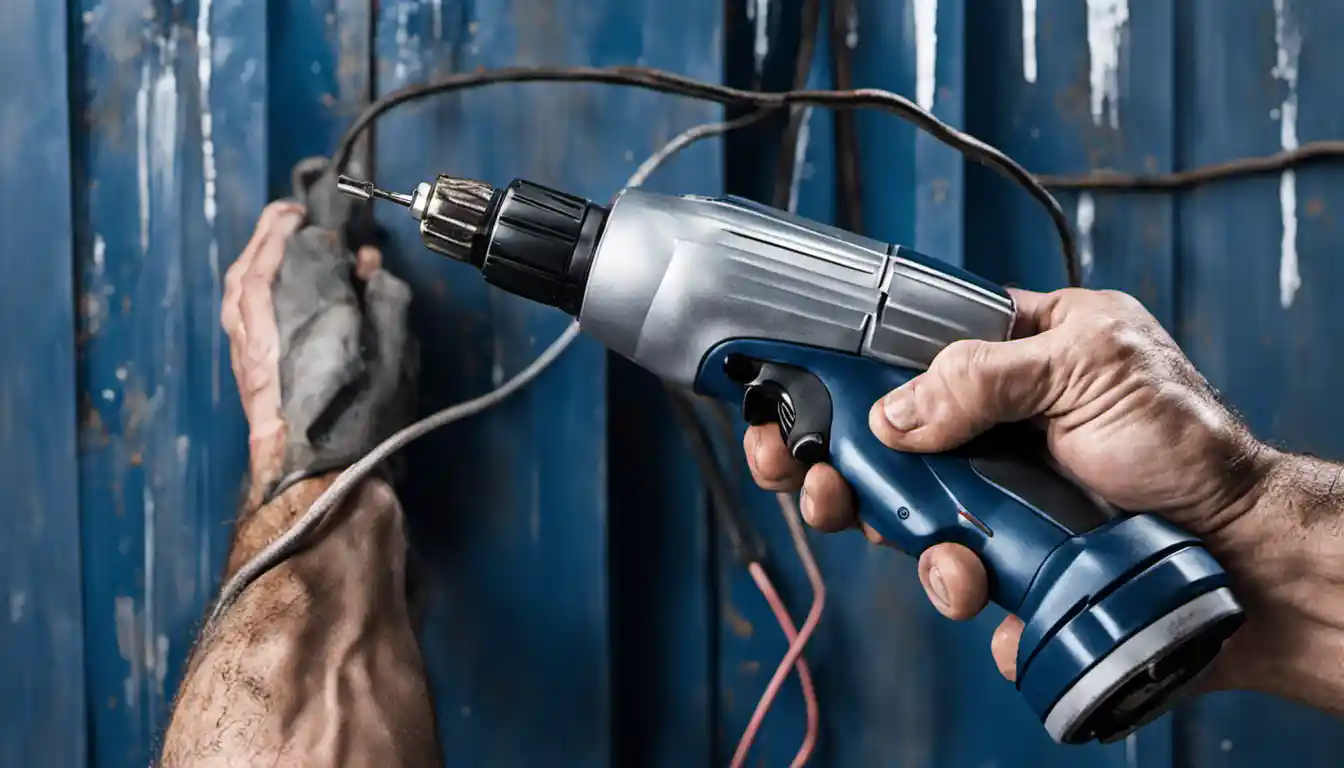Introduction
The number of solar panels required to heat a pool depends on several factors, which include the size of the pool, how much sunlight your location receives daily, and your desired water temperature. Typically, it is recommended that the total area of your solar panels should be at least equal to 50-75% of the pool’s surface area for effective heating.
The Rule of 100% Coverage
Look, it’s simple: the more surface area your pool has, the more energy it needs to stay heated. Therefore, the golden rule is total pool surface coverage should, ideally, match the total surface area covered by your solar panels.
Evaluating Your Pool Size
The first step in calculating how many solar panels you need to heat your swimming pool is, obviously, determining the size of your pool. The surface area measurement guides you to get appropriate solar coverage. If your pool’s area is 800 square feet, you’ll need approximately the same in solar panels.
Calculating the Required Solar Panels
Now, here’s a killer point to remember: not all solar panels are created equal. Some are 4’x10′, others are 4’x12′, and so on. You’ll need to translate pool surface area into the number of panels. For instance, if you have an 800 square feet pool, and you choose 4’x10′ panels (with 40 square feet per panel), you’ll need about 20 panels to heat your pool.
Avoiding Common Measurement Mistakes
Don’t be that person who ends up buying double the solar panels because of measurement mistakes. Area measurements can be tricky, especially for uniquely shaped pools. If you have any doubts, it’s well worth hiring a professional to assess and measure your pool’s surface area accurately.
Climate Considerations in Solar Pool Heating
By now, you should know that different climates play pivotal roles in answering the question, “how many solar panels to heat a pool?”
Addressing Impact of Seasonal Changes
Solar panels work all year round, but environmental conditions like clouds, rain, and shorter daylight hours in winter can affect their output. Therefore, you may need more solar panels if you wish to maintain a suitable temperature for your pool in cooler months.
Tackling Extreme Weather Conditions

If you live in an area with extreme weather conditions like snow, hail, or high winds, this will affect where you can install your panels and their energy efficiency. In such cases, you might need to increase the number of panels to accommodate these factors.
Understanding Sun Exposure and Heat Absorption
The more direct sunlight your solar panels receive, the more effective they are in heating your pool. So, look at your potential installation site and determine how many hours of direct sunlight it gets. This will play a large role in deciding how many solar panels to heat a swimming pool.
Optimizing Efficiency of Solar Panels for Pools
Having been in the game for two decades, I’ve picked up some tips along the way. Here’s the rundown:
Positioning Your Solar Panels Correctly
Your solar panels should ideally face true south (in the Northern Hemisphere) or true north (in the Southern Hemisphere) to get the maximum amount of sunlight. The angle at which your panels are installed also matters and depends on your latitude.
Balancing Panel Angles
The solar panel’s tilt angle is usually set at an angle equal to your latitude to receive the most sun year-round. However, by adjusting this for summer (latitude – 15°) or winter (latitude + 15°), you’ll maximize seasonal effectiveness.
Maintenance and Care for Maximum Efficiency
Like everything else, solar panels need care. Regular cleaning ensures they remain efficient. A solar cover can both reduce heat loss overnight and keep your pool cleaner, minimizing maintenance needs.
Types of Solar Panels for Pool Heating
Now that you know the basics, let’s decipher the types of panels used for pool heating.
Solid Body Solar Panels
These are the most common solar pool heaters, comprising large panels filled with a network of tubes. They’re perfect for heating large pools.
Separated Tube Solar Panels

Separated tube solar panels are a good choice for small above-ground swimming pools. Their design reduces the impact of wind cooling, improving their efficiency.
Glazed Solar Panels
These panels are the highest in efficiency and price. They use copper tubing in an insulated box with tempered glass covering. If you want to extend your pool season into colder months, consider opting for glazed panels.
Identifying the Best Brand for Solar Pool Heating
Let’s discuss a factor you probably have already thought about: brand reputation.
Evaluating Brand Reputation
Trust me when I say, all solar panels are not created equal. Brands vary in their performance, reliability, and service. Dig deep into the brands available, read reviews, and make an educated decision.
Analyzing Panel Durability and Lifespan
It’s not only about how many solar panels you need to heat a swimming pool, but also the lifespan of those panels. Lower cost solar panels may seem a good idea at first, but they can fail earlier and end up costing you more in the long run.
Comparing Cost Effectiveness of Different Brands
Cost effectiveness isn’t just about the price per panel. It’s about how much heat each panel can generate per dollar spent. It might be worth spending more upfront on highly efficient panels from a reputable maker to save money in the long run.
DIY or Professional Installation Considerations
To DIY or not to DIY, that is the question. It’s a tough one. Here’s what you need to know:
Understanding the Installation Process

The installation process varies by panel type, location, and individual skills. Before you decide, understand the installation process. If you’re comfortable with it, a DIY job can save you some cash.
Pros and Cons of DIY Installation
If you choose DIY, you save on the cost of professional installation but lose the guarantee and possible service support. If done incorrectly, there’s also a risk of damages or leaks.
When to Hire a Professional
I recommend getting a pro when your house is multi-story, the installation area is hard to reach, or you simply don’t feel 100% comfortable doing it yourself.
Using DIY Kits for Installing Solar Pool Heaters
If you’re a handy kind of person, installing a solar pool heater using a DIY kit could be a fun and fulfilling task.
What’s Included in a DIY Kit
A standard DIY kit usually includes the solar panels, mounting hardware, and a controller. Some kits offer additional components based on special needs.
Step-by-step Guide for DIY Installation
Get down to the nitty-gritty with our comprehensive guide for installing your solar panels. We’ll hold your hand through each step of the process.
Tips to Make DIY Installation Easier
Label your parts and read the instructions carefully. Remember, it’s not a race. Take your time, double-check your work, and most importantly, don’t skip safety measures.
Conclusion
So, how many solar panels to heat a pool? Well, with this guide on hand, you’re just a little math and assessment away from finding out.
Remember, it’s not a one-answer-fits-all scenario, and variations will come based on pool size, local climate, solar exposure, and other factors discussed above. As Indiana Jones could have said had he been a solar panel expert like me: “The ultimate quest is finding the perfect balance of cost and heat output, based on your unique playing field.”
But with this guide, you’re not going at it alone. Enjoy the splashes and bask in the knowledge that your swimming pool is nudging Mother Earth one step closer to a greener future.



